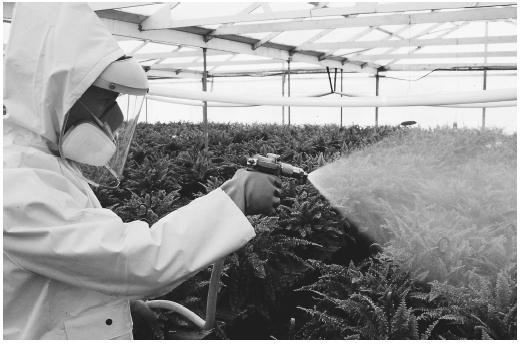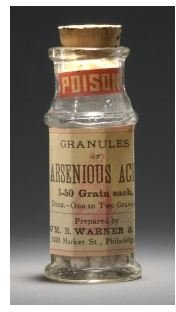Pesticides: Brief History of their Environmental Use
Pre-Synthetics
One of our first major environmental issues and one of the most impactful actions made in controlling nature, the use of
pesticides has gone through extensive changes during the development of humankind. From the beginning to the present, the history of pesticides shows not only our development of science and agriculture but also our growing awareness of the world around us.
Several hundred years ago, farmers were well acquainted with both the creatures that ruined their crops and pesticides. Instead of manufactured poisons, they tended to use the natural elements of the earth to protect their crops such as biological poisons or heavy metals such arsenic, pyrethrum, cyanide, sulfur, and lead. Although these were not always effective and sometimes detrimental to the soil, they worked well for many years.
The Beginning of the Synthetic Era

In the 20th century, several things changed. The World’s population grew exponentially (as is its habit), and more food was needed to feed everyone. The World Wars occurred, and many scientific efforts were directed to the creation and dispersal of weaponized chemical agents. This research eventually led to the making of synthetic pesticides.
Now times really began to change. Scientists were able to make specific pesticides directed at specific organizations, such as algicides, bactericides, fungicides, and insecticides. While in many ways these were safer than the general poisons farmers used before, the new pesticides also tended to be much more powerful, and sometimes misdirected.
An excellent example of these early pesticides is the infamous DDT (dichlorodiphenyltrichloroethane), which showcases both the benefits of these new pesticides and their inherent dangers. When DDT was first invented by a Swiss chemist, it was found to be inexpensive (a huge plus), potent specifically toward insects, long-lasting, and insoluble. Soon it was being used to rid homecoming soldiers of lice and clear up mosquito/malaria problems in multiple nations.
Only later were the detriments of DDT investigated and made popular by Rachel Carson’s “Silent Spring”. Specifically, the pesticide was found to be toxic to a wider range of animals than previously thought, including most importantly young fish and crabs. Because of DDT’s synthetically induced insolubility, it also had a habit of sticking around—permanently. Scientists were able to find evidence of DDT bioconcentration in the tissues of animals, increasingly more in larger animals such as large fish and the osprey feeding on them. While there were few visible effects on the environment or the food chain, scientists determined that there prolonged use of DDT could pose significant dangers.
Changes and the Rise of Environmental Concerns

In the latter half of the 20th century, three more significant changes took place. First, a large number of businesses and a portion of the economy of America became dependent on manufacturing and dispersing a vast array of pesticides for everything from keeping insects away from houses to saving crops and people from poisonous molds. As pesticide bans have been discussed for many years this economic factor continues plays an important role in influencing government decisions. According to some reports a ban on fungicides alone would lower America’s GDP by $28 billion.
Second, scientists and pesticide researchers began developing safer ways to protect people and crops, the most popular of which was known as Integrated Pest Management, or IPM. Rather than solely using toxins, IPM strived to combine carefully planned and timed pesticide use with crop growing and production techniques that encouraged natural insect predators and discouraged harmful pests of all kinds, while keeping an eye on the ecological balance of the area in case important parts of the food chain became too damaged. The IPM approach is still hailed today as an effective means of cyclical pesticide use, although in epidemics and emergencies more drastic measures are usually taken.
Third, the production of synthetic pesticides changed. Since long-lasting pesticides such as DDT were discovered to be problematic, scientists instead developed pesticides that quickly degraded but were far more toxic, 10 times or more effective than DDT. While these poisons required a lower concentration and lasted only a short time, they also needed to be applied with great care.
Present Day
Today, researchers have devised proven methods for detecting traces amounts of pesticides in the environment and judging the potency of new pesticides, something expressed by the term LD, or the Lethal Dose required to kill 50 percent or more of subjects. LD is becoming increasingly important since detecting pesticides in ecological systems does not necessarily prove there is a problem, especially when we can detect particles in one part per trillion. The government has implemented restrictions and requirements to govern the use of pesticides by homeowners, farmers, and corporations, and from time to time a pesticide is pulled from the market when research shows the product may have dangerous effects on the environment.
The future of pesticides lies in several different areas. While those working in biochemistry are becoming more and more adept at manipulating molecules to create new substances, i.e. toxins, those in genetic engineering are working to create crops that automatically produce natural pesticides and viruses that can infect and limit the incursion of specific insects. These new tools, although offering their own set of dangers, will become increasingly important as newer generations of insects, molds, and fungi become increasingly resistant to older pesticides.
